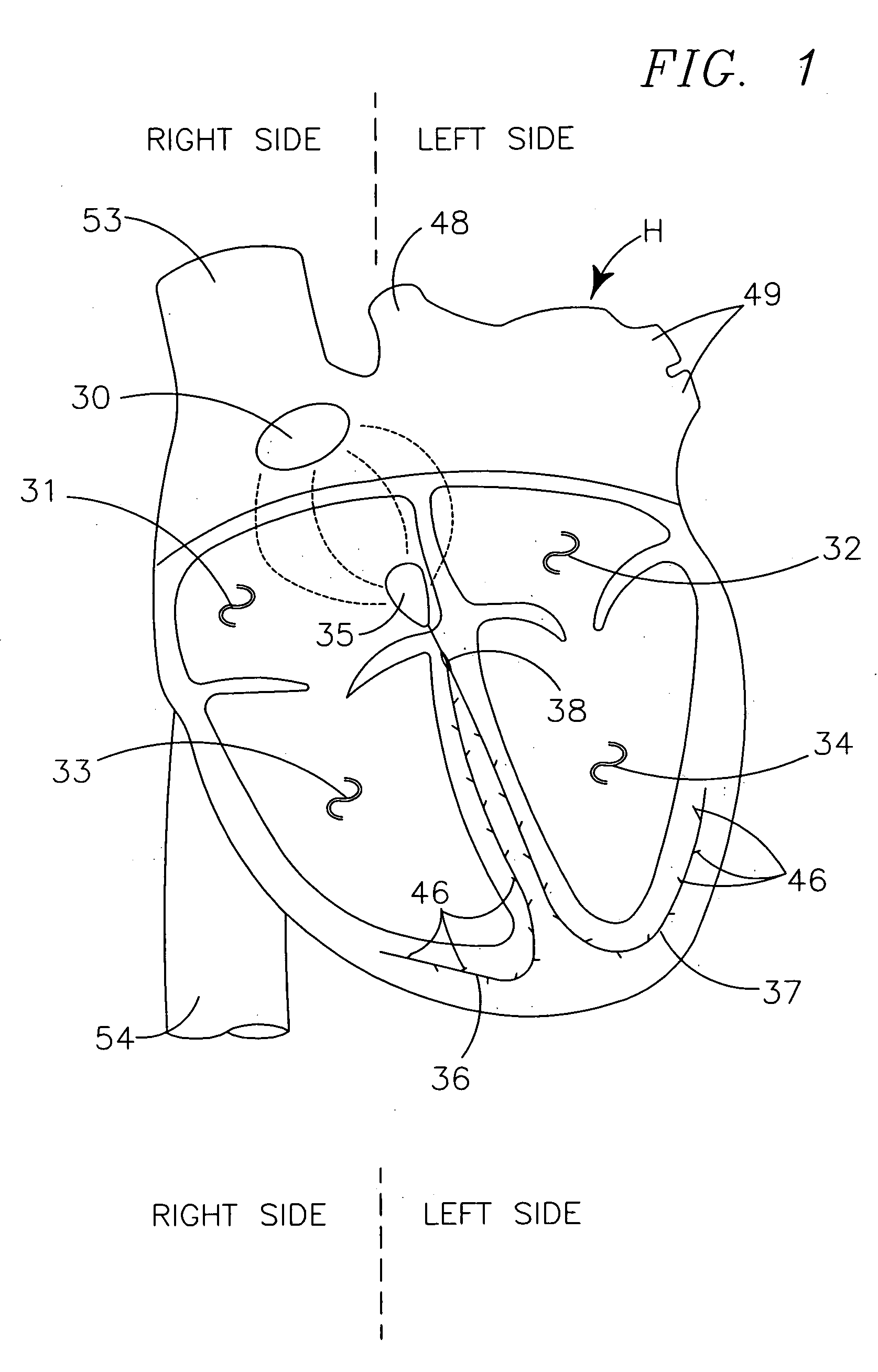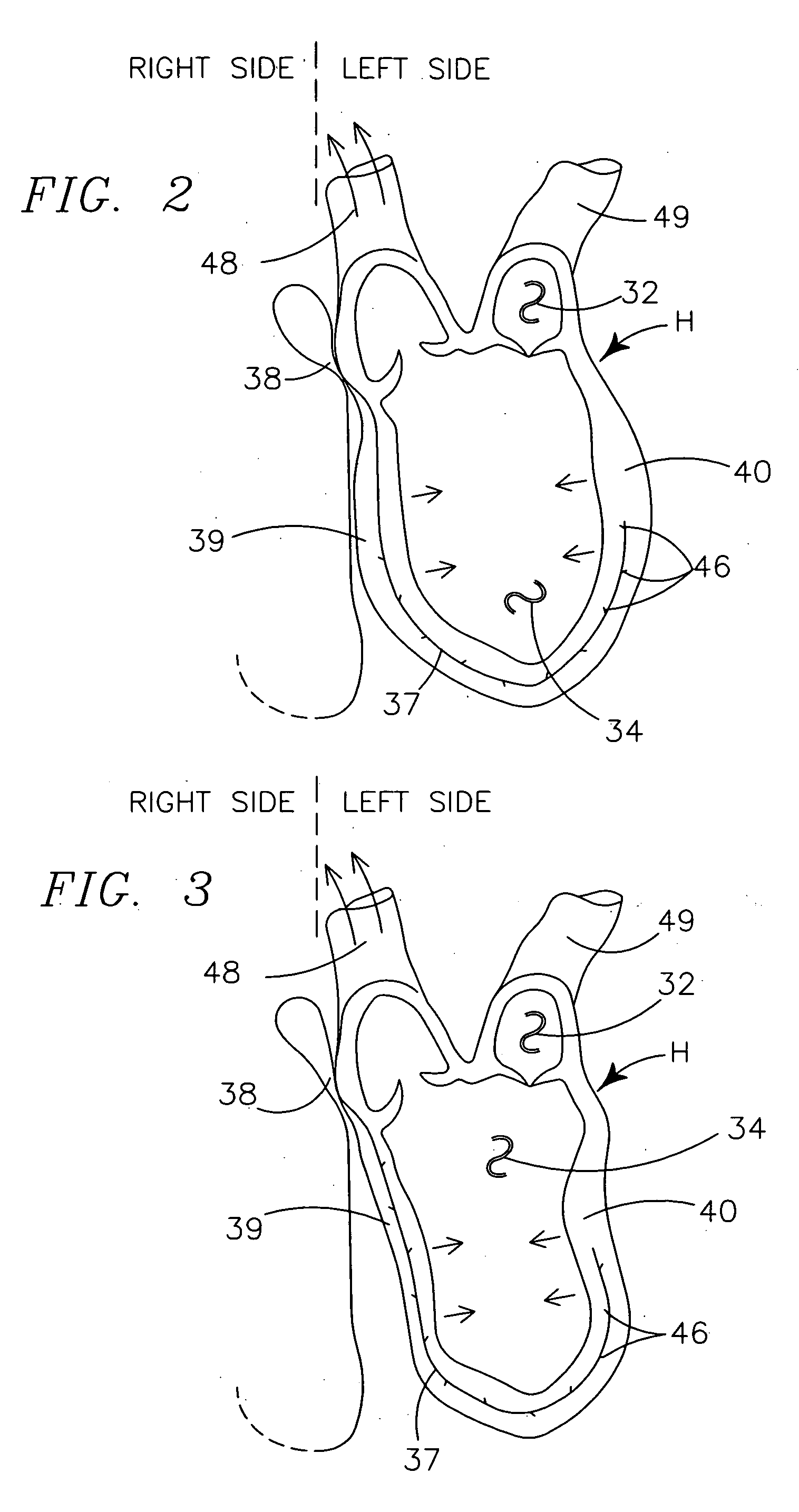Method for optimizing CRT therapy
- Summary
- Abstract
- Description
- Claims
- Application Information
AI Technical Summary
Benefits of technology
Problems solved by technology
Method used
Image
Examples
Embodiment Construction
[0063]The present invention provides a method for optimizing cardiac resynchronization therapy (CRT) by assessing movement of tips of ventricular leads implanted in a human heart. The disclosed method is expressly described in terms of the left ventricle; however application to the other heart chambers, including the right ventricle, may be readily appreciated by those skilled in the art without departing from the present inventive method.
[0064]Our method generally provides a ventricular pacemaker 20 having a left ventricular lead 21, a right ventricular lead 22 and an atrial lead 23; a radiological three dimensional imaging system 24; an image compiling system 25; an analytical processing system 27 and a visual display 26. The left ventricular lead 21 has a lead tip 21a at its terminal end, the right ventricular lead 22 has a lead tip 22a at its terminal end and the atrial lead 23 has a lead tip 23a at its terminal end.
[0065]CRT is currently indicated for patients with left ventric...
PUM
 Login to View More
Login to View More Abstract
Description
Claims
Application Information
 Login to View More
Login to View More - R&D
- Intellectual Property
- Life Sciences
- Materials
- Tech Scout
- Unparalleled Data Quality
- Higher Quality Content
- 60% Fewer Hallucinations
Browse by: Latest US Patents, China's latest patents, Technical Efficacy Thesaurus, Application Domain, Technology Topic, Popular Technical Reports.
© 2025 PatSnap. All rights reserved.Legal|Privacy policy|Modern Slavery Act Transparency Statement|Sitemap|About US| Contact US: help@patsnap.com



